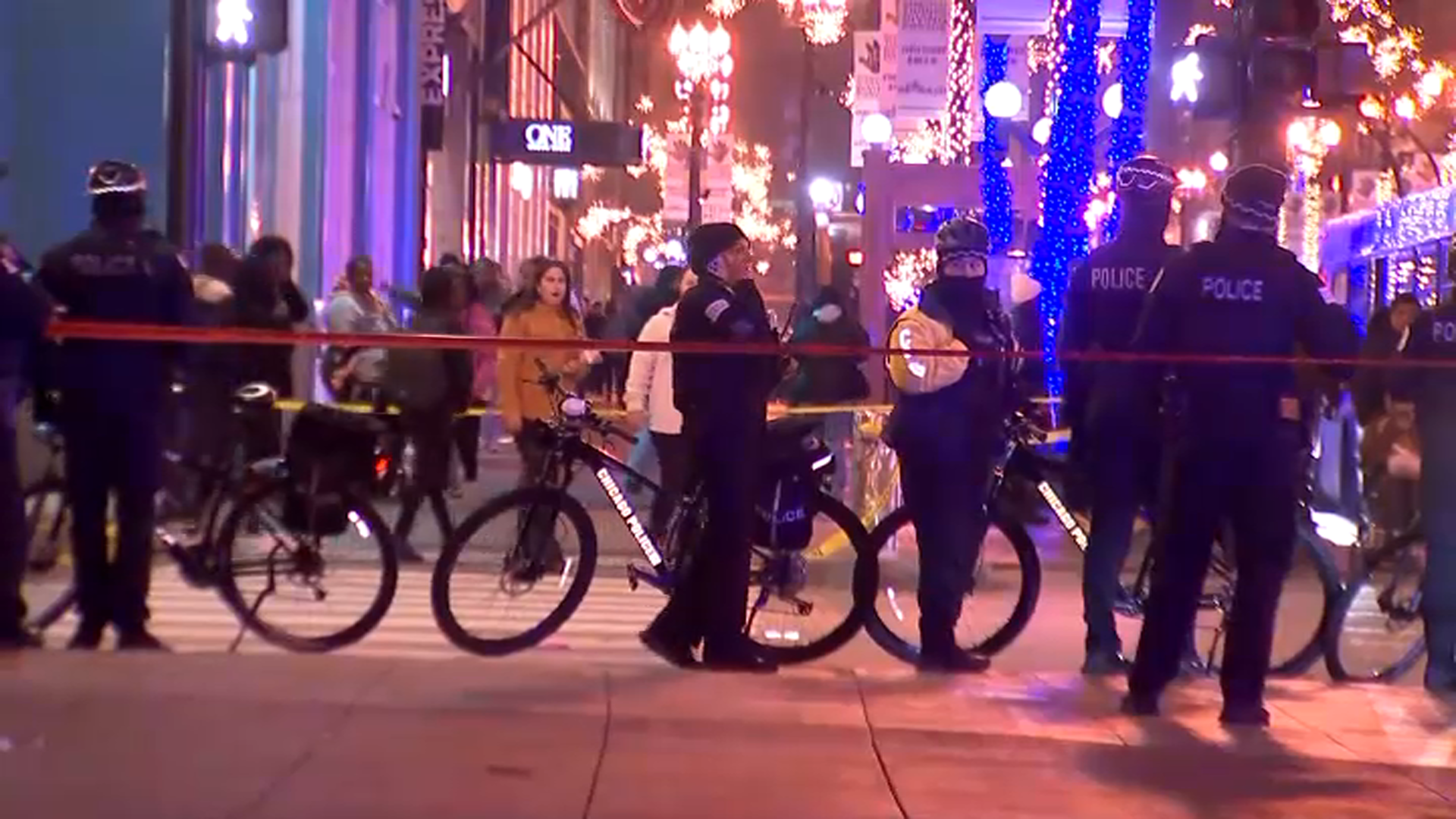Illinois is currently in the fourth phase of the Restore Illinois plan, but as coronavirus metrics continue to spike across the state, many are under heightened mitigations and the governor has warned that the state could see restrictions from previous phases brought back.
Last week, Gov. J.B. Pritzker warned restrictions from as far back as Phase 2 could return.
Illinois began Phase Two of its reopening plan on May 1, when a modified stay-at-home order took effect allowing some businesses to reopen. Phase Three began a few weeks later.
The governor has declined to give specifics on what restrictions could be ahead and though he has previously said another stay-at-home order was not on the table, on Friday, he said he can't guarantee what might happen in the coming weeks.
In addition to the phased plan, Illinois has also implemented a tiered mitigation plan that would impose stronger restrictions to specific regions seeing increasing metrics.
Currently, all of Illinois is experiencing increased mitigations under that plan. Most are under Tier 1, but Pritzker is set to announce several other regions will soon enter Tier 2, joining one other region in that level.
Here's a look at the five-phased Restore Illinois plan and the full mitigation plan:
Local
Phase 1:
What it means: This phase takes place when the rate of infection among those tested and the number of patients admitted to the hospital is high or rapidly increasing.
What is allowed: Only essential businesses remain open.
Restrictions: Strict stay-at-home and social distancing guidelines are put in place.
Phase 2:
What it means: The rate of infection among those tested and the number of patients admitted to the hospital beds and ICU beds increases at a slower rate than Phase 1, moving toward a flat and even a downward trajectory.
What is allowed: Non-essential retail stores reopen for curb-side pickup and delivery. Residents can begin enjoying additional outdoor activities like golf, boating and fishing while practicing social distancing.
Restrictions: Illinoisans are directed to wear a face covering when outside the home.
Phase 3:
What it means: The rate of infection among those tested, the number of patients admitted to the hospital, and the number of patients needing ICU beds is stable or declining from those seen in Phase 1 and Phase 2.
What is allowed: Manufacturing, offices, retail, barbershops and salons are open to the public with capacity and other limits and safety precautions. All gatherings limited to 10 or fewer people are allowed.
Restrictions: Face coverings and social distancing are the norm.
Phase 4:
What it means: The rate of infection among those tested and the number of patients admitted to the hospital continues to decline.
What is allowed: All gatherings of up to 50 people are allowed, restaurants and bars open with restrictions and child care and schools can reopen under guidance from the IDPH.
Restrictions: Face coverings and social distancing are the norm.
Phase 5:
What it means: With a vaccine or highly effective treatment widely available or the elimination of any new cases over a sustained period, the economy fully reopens with safety precautions continuing.
What's allowed: Conventions, festivals and large events are permitted, and all businesses, schools, and places of recreation can open.
Restrictions: New safety guidance and procedures will be in place reflecting the lessons learned during the COVID-19 pandemic.
Here's a look at the full mitigation plan:
Tier 1:
BARS
- All bars and restaurants close at 11pm and may reopen no earlier than 6am the following day
- No indoor service
- All bar patrons should be seated at tables outside
- No ordering, seating, or congregating at bar (bar stools should be removed)
- Tables should be 6 feet apart
- No standing or congregating indoors or outdoors while waiting for a table or exiting
- No dancing or standing indoors
- Reservations required for each party
- No seating of multiple parties at one table outdoors
RESTAURANTS
- All restaurants close at 11pm and may reopen no earlier than 6am the following day
- No indoor dining or bar service
- Tables should be 6 feet apart. No standing or congregating indoors or outdoors while waiting for a table or exiting
- Reservations required for each party
- No seating of multiple parties at one table
MEETINGS, SOCIAL EVENTS, GATHERINGS
- Limit to lesser of 25 guests or 25% of overall room capacity both indoors and outdoors
- No party buses
- Gaming and Casinos close at 11:00pm, are limited to 25 percent capacity, and follow mitigations for bars and restaurants, if applicable
OFFICES
- Continued emphasis on telework for as many workers as possible
ORGANIZED GROUP RECREATIONAL ACTIVITIES & GYMS
- All Sports Guidance effective August 15, 2020, remains in effect
- Outdoor Activities (not included in the above exposure settings) continue per current DCEO guidance IDPH will continue to track the positivity rate in regions requiring additions
Tier 2:
BARS
- Reduce party size from 10 to 6
RESTAURANTS
- Reduce party size from 10 to 6
MEETINGS, SOCIAL EVENTS, GATHERINGS
- Maximum indoor/outdoor gathering size = 10
- Applicable to professional, cultural and social group gatherings
- Not applicable to students participating in-person classroom learning
- This does not reduce the overall facility capacity dictated by general business guidance such as office, retail, etc.
- Not applicable to sports; see sports guidance here
OFFICES
- Promote work from home when possible.
ORGANIZED GROUP RECREATIONAL ACTIVITIES & GYMS
- Maintain lesser of 25 people/25% of capacity for both indoors and outdoors
- Groups limited to 10 or fewer
- Does not apply to Fitness Centers
Tier 3:
HOSPITALS
- Suspend elective surgeries and procedures; implement surge capacity; assess need to open Alternate Care Facility
MEETINGS, SOCIAL EVENTS, GATHERINGS
- Strictest limit to gatherings and room capacity
OFFICES
- Institute remote work for all non-essential workers
ORGANIZED GROUP RECREATIONAL ACTIVITIES & GYMS
- Suspend organized indoor and outdoor recreational activities
RETAIL
- Suspend all non-essential retail; only essential retail open (i.e. grocery stores, pharmacies)
SALONS AND PERSONAL CARE
- Suspend salon and personal care operations
According to the governor's office, the following metrics will be used to determine "when the spread of the virus in a region requires additional mitigations":
- Sustained increase in 7-day rolling average (7 out of 10 days) in the positivity rate and one of the following severity indicators:
- Sustained 7-day increase in hospital admissions for a COVID-19 like illness
- Reduction in hospital capacity threatening surge capabilities (ICU capacity or medical/surgical beds < 20%)
- OR three consecutive days averaging ≥ 8% positivity rate
Once a region enters the mitigation plan, the Illinois Department of Health will then track their metrics for two weeks.
If the positivity rate averages less than or equal to 6.5% over a 3-day period, that region can return to Phase 4 restrictions. If the positivity rate it between 6.5% and 8%, the department will continue monitoring. If the positivity rate is great than or equal to 8%, additional restrictions could be implemented.



